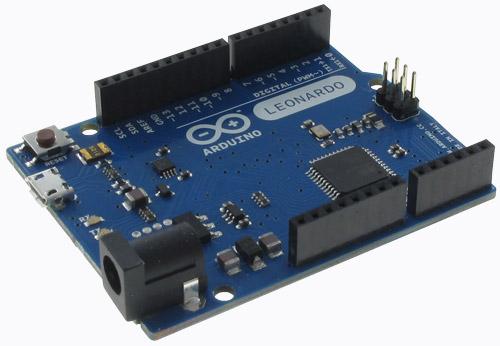Smart Chromium Alloy Resistive Fabric
About the project
Automatically warm your neck and listen to music in style!
Project info
Items used in this project
Story
Summer time will be over soon (hopefully, thanks global warming), so it's time to get out your coats and Smart Chromium Alloy Resistive Fabrics. What? You don't have one? Well now you too can have your very own electrically heated scarf!
Step 1: Materials List
Some of these things do not need to be bought, I just included links below for reference. The batteries you might be able to get from a tablet, the relay from different circuit board scavenging, the speaker from any broken electronic that emits sound, the aux cord from broken headphones, and the fabric from an old shirt or scarf.
Having said that, use the links below if you don't have everything.
All links open in new tabs:
Max32620FTHR but you could practice with an Arduino UNO
I got my materials in 2 days thanks to Prime. Have a free trial of Amazon Prime on me :).
; ; 1 / 4
1 / 4
Step 2: Cutting/Picking the Fabric
Our scarf will need to be wide enough to be able to be folded in half and long enough to hold all of our components. Depending on how long your resistive wire will be, you will need to calculate the dimensions of your scarf. My wire was about 7 feet long, and I bent it 3 times to make 4 strands as shown in the images above. Use some pins to hold your equally divided strands. They should be placed in the center of the scarf to be closest to your neck. However, we will only be able to use half of the scarf or fabric you measure as we will be folding the other half on top of the one we place our components on. The outer edges don't really matter as they won't be in direct contact with your neck and would decrease the power efficiency.
Once you have secured your chromium wire, test it out with your batteries. Again, these should be lithium-polymer batteries which are usually rated at 3.7 volts. Connect them all in series with the wire to get 14.8 volts and touch the wire. It should be hot enough to feel but not burn. Fold part of the scarf over it to feel what it would be like once worn. If you have a voltage regulator that can take the current, go ahead and hook it up to your batteries so you can stay the same level of toastiness even when the batteries' voltage decreases over time.
Do not attempt to use plastic or other materials for this project. The wire will melt the material and may burn you if you do so. Try something like cotton or linen. It will warm up but not catch on fire. As long as you don't make your wire glow red-hot, you'll be fine. Just remember that the shorter the wire, the smaller the voltage needed to heat it up.
; ; 1 / 6
1 / 6
Step 3: Setting Up the Electronics
Relay Circuit
To allow the Maxim Featherboard to control this scarf, we will need to use a relay. To do this, we simply connect a jumper wire on each side of the relay's coil side, add a diode to protect it from voltage spikes, and use the other side to break one of the wires (I split the red ''-" side in the pictures) like a switch. Don't forget to solder the tips of your switch or use wire nuts. Now, whenever our relay is powered, the energy from the batteries will flow into our chromium wire. The other component on this breadboard is a boost converter. It will boost the input from the FTHR board to 12v to activate the relay, as its logic voltage is too low to power it alone.
Feather Board
To secure it to the scarf, cut a strip of duct tape to stick to the bottom of the breadboard and leave about 1cm extra on each side. This will let you run a pin through it to secure the breadboard. Connect two jumper wires to the FTHR from the relay circuit. One should go to ground, while the other goes to a data pin of your preference. Secure it with pins, as well. It is not shown in the image, but connect your DHT22 sensor to the board by connecting the power and ground wires where they go, and data to an unused input pin. This will save you from having to use a button to activate your SCARF and will make it fully automatic. It will detect if it is cold or not and then act upon that data.
Speaker
Since this is a small speaker with no audio booster, it will not be loud enough to disturb others but loud enough for you to hear. Wrap the scarf around your neck and mark the place where your right (or left) ear would be if you raised the scarf. Then simply solder an aux connection to it and pin it in place. Make sure your aux cord is long enough to exit the scarf. I got one from some old earbuds that no longer worked, so it was long enough to reach my pockets.
Step 4: Code
In Arduino IDE, add the Max DapLink programmer to your list of microcontroller programmers. You will also need to install Max's devices. All of this information is in the Materials list in the MAX link. Then, connect your MaxPICO (the physical programmer for the FTHR board) to your FTHR board and connect both to your computer. You can use an Arduino Uno while you wait for your FTHR board, but it is not nearly as compact or efficient as the Max board. the Featherboard was made for wearables, while the Uno is just for general projects.
Upload the included program to your board using the included pico board and it should be ready to run. Just be sure to configure the temperature index included to match your environment. 50 degrees may be cold for a Texan, but not a Canadian. Also make sure to change the input pin for your DHT22 sensor and your output pin for the relay. Download the code for tempIndexTrigger here.
Make sure to provide power to both the DapLink connector and the FTHR boards so that the program upload works.
; ; 1 / 2
1 / 2
Step 5: Finishing Touches
Depending on your environmental conditions, you could add waterproof lining or other fancier fabrics. If you are comfortable here, go ahead and sew the electronics into place. I plan on adding a few more features to mine, so I used pins. Once that is done, fold your scarf in half to cover your electronics and sew the edges shut. Remember to leave a small opening for the aux and power cords.
Step 6: How It Works
This Smart Chromium Alloy Resistive Fabric will protect you from the blistering cold by detecting if the temperature is too cold for you and turning on a homemade heating pad. The DHT22 sensor sends data to the Maxim FTHR board that is interpreted by the onboard program. If it is below the your configured threshold of comfort, it will send out a signal that will go into a boost converter and activate a relay. This relay will then allow energy to flow from the batteries to the nickel chromium wire. This wire is highly resistive because of its atomic makeup, so it slows down electrons passing by through a tiny version of friction. Because of all the friction, the wire heats up (like in your toaster) and warms up the fabric around it. This then warms your neck. The speaker is just a bonus feature I sewed in there for convenience. Now, I don't have to periodically swap my headphones for earmuffs when I am outside.
Enjoy!






















Leave your feedback...